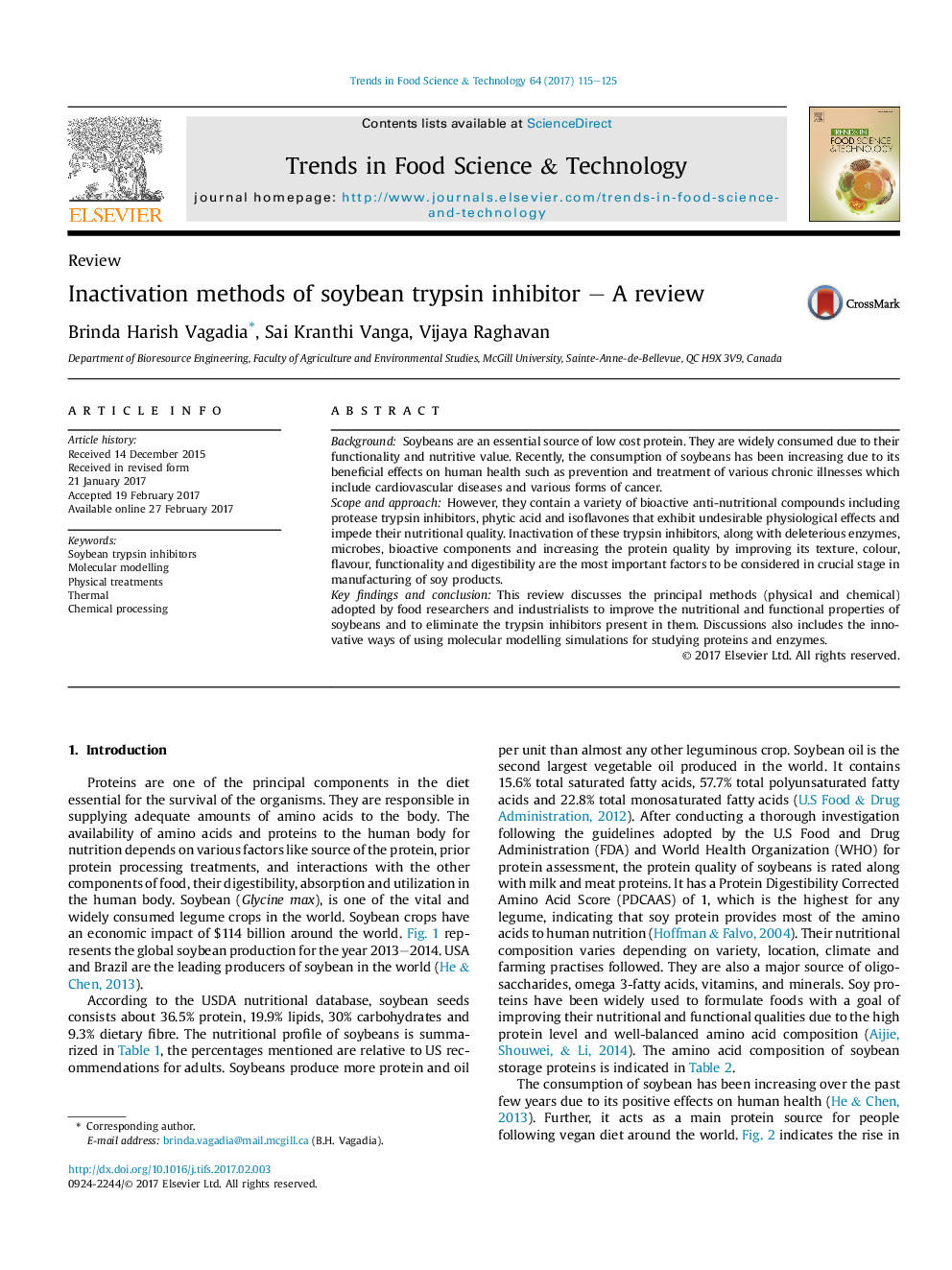| Article ID | Journal | Published Year | Pages | File Type |
|---|---|---|---|---|
| 5523782 | Trends in Food Science & Technology | 2017 | 11 Pages |
â¢The physical and chemical methods for inactivation of soybean trypsin inhibitor.â¢Novel treatments used by the food researchers and industrialist.â¢Increase and improve the nutritional and functional properties of soybean.â¢Use of molecular modelling techniques to visualize the structural changes in protein during processing.
BackgroundSoybeans are an essential source of low cost protein. They are widely consumed due to their functionality and nutritive value. Recently, the consumption of soybeans has been increasing due to its beneficial effects on human health such as prevention and treatment of various chronic illnesses which include cardiovascular diseases and various forms of cancer.Scope and approachHowever, they contain a variety of bioactive anti-nutritional compounds including protease trypsin inhibitors, phytic acid and isoflavones that exhibit undesirable physiological effects and impede their nutritional quality. Inactivation of these trypsin inhibitors, along with deleterious enzymes, microbes, bioactive components and increasing the protein quality by improving its texture, colour, flavour, functionality and digestibility are the most important factors to be considered in crucial stage in manufacturing of soy products.Key findings and conclusionThis review discusses the principal methods (physical and chemical) adopted by food researchers and industrialists to improve the nutritional and functional properties of soybeans and to eliminate the trypsin inhibitors present in them. Discussions also includes the innovative ways of using molecular modelling simulations for studying proteins and enzymes.
